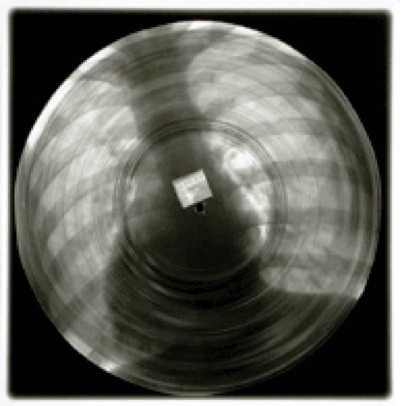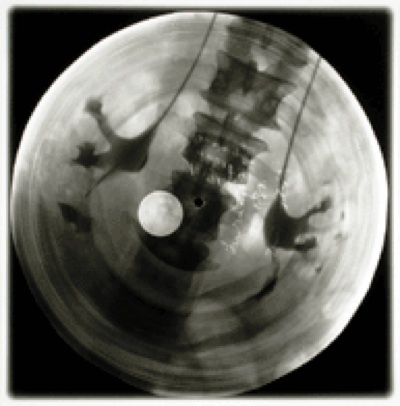
Avant la disponibilité du magnétophone, et durant les années 1940-50, quand le vinyle était rare, les gens de l'Union soviétique ont commencé à transférer des enregistrements de musique occidentale interdite sur des plaques vinyles de rayons X misent au rebut!

Avec l'aide d'un appareil spécial, des enregistrements jazz ou rock 'n' roll piraté interdit étaient alors "pressé" sur des radiographies sur vinyle épais récupérés dans les poubelles de l'hôpital et ensuite découpés en disques de 23-25 cm de diamètre.

"Ils coupaient les vinyles rayons X en forme de disque, simplement avec des ciseaux de manucure, et ils utilisaient une cigarette pour brûler le trou du centre» dit l'auteure Anya von Bremzen qui rapporte cet anecdotique fait étrange : "Vous trouviez Elvis sur des poumons, Duke Ellington sur le scanner du cerveau de tante Masha ; d’une certaine manière, la musique occidentale interdite étaient transférée sur des photographies intimes : les secrets internes des citoyens soviétiques"!!!




Voici un article très intéressant et très éclairant au sujet de ces étranges flexidiscs, trouvé dans l'ouvrage "Artemy Troitsky’s Back in the USSR: The True Story of Rock in Russia" (1987, Omnibus Press) :
"The demand for pop and jazz recordings at the end of the fifties and beginning of the sixties was already enormous, while records and tape recorders were in catastrophically short supply. This led to the birth of a legendary phenomenon — the memorable records ‘on ribs.’ I myself saw several archive specimens.
These were actual X-ray plates — chest cavities, spinal cords, broken bones — rounded at the edges with scissors, with a small hole in the centre and grooves that were barely visible on the surface. Such an extravagant choice of raw material for these ‘flexidiscs’ is easily explained: X-ray plates were the cheapest and most readily available source of necessary plastic. People bought them by the hundreds from hospitals and clinics for kopeks, after which grooves were cut with the help of special machines (made, they say, from old phonographs by skilled conspiratorial hands).
The ‘ribs’ were marketed, naturally, under the table. The quality was awful, but the price was low — a rouble or rouble and a half. Often these records held surprises for the buyer. Let’s say, a few seconds of American rock’n'roll, then a mocking voice in Russian asking: “So, thought you’d take a listen to the latest sounds, eh?”, followed by a few choice epithets addressed to fans of stylish rhythms, then silence.
Both the shtatniki and beatnicki were few in number and their heyday was brief. The imitative, decorative style and American mannerisms they cultivated were way out of place in the early sixties, when Soviet youth was full of euphoric enthusiasm over the fliht of Yuri Gagarin, the Cuban revolution, and the programme proclaimed by Khruschev at the 22nd Party Congress wherein Communism would be achieved within the next two decades. Decadence and disaffection were completely out of style".

Source: Junk Culture et Street Use
Traduction : Max Level

Aucun commentaire:
Publier un commentaire